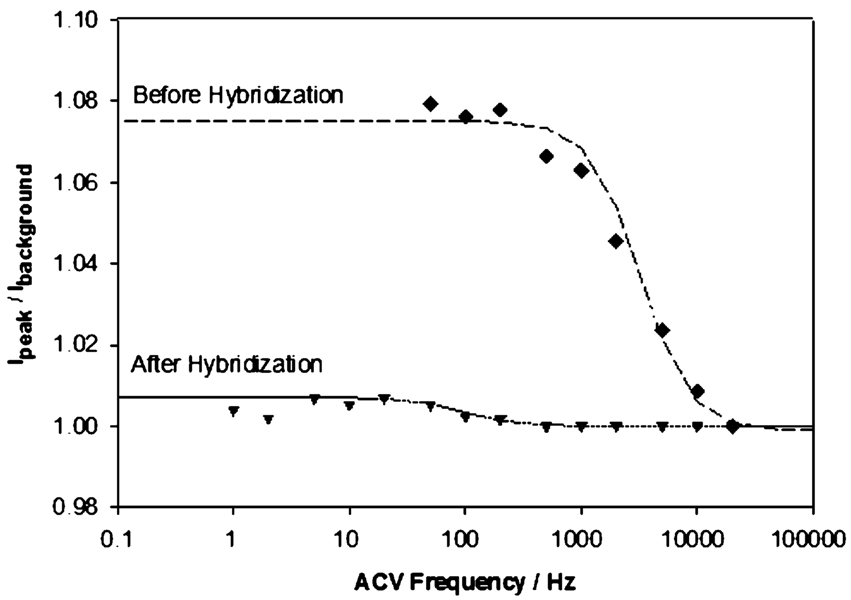Figure 8.
A significant reduction in electron-transfer rate is observed upon hybridization for low-density sensors (probe density ~ 3.9 × 1010 molecules cm−2). A plot of the ratio of peak to background currents versus AC frequency exhibits a dramatic change in slope when electron transfer can no longer respond to the rapidly oscillating applied potential. This presumably reflects a transition from electron transfer limited by the intrinsic transfer rate of the redox moiety (here, ferrocene) to transfer limited by the (much slower) rate at which the end of the probe—target duplex collides with the electrode. Shown are data collected from a single electrode; measurements from multiple (>6) electrodes are highly correlated, exhibiting less than a 10% standard deviation.

